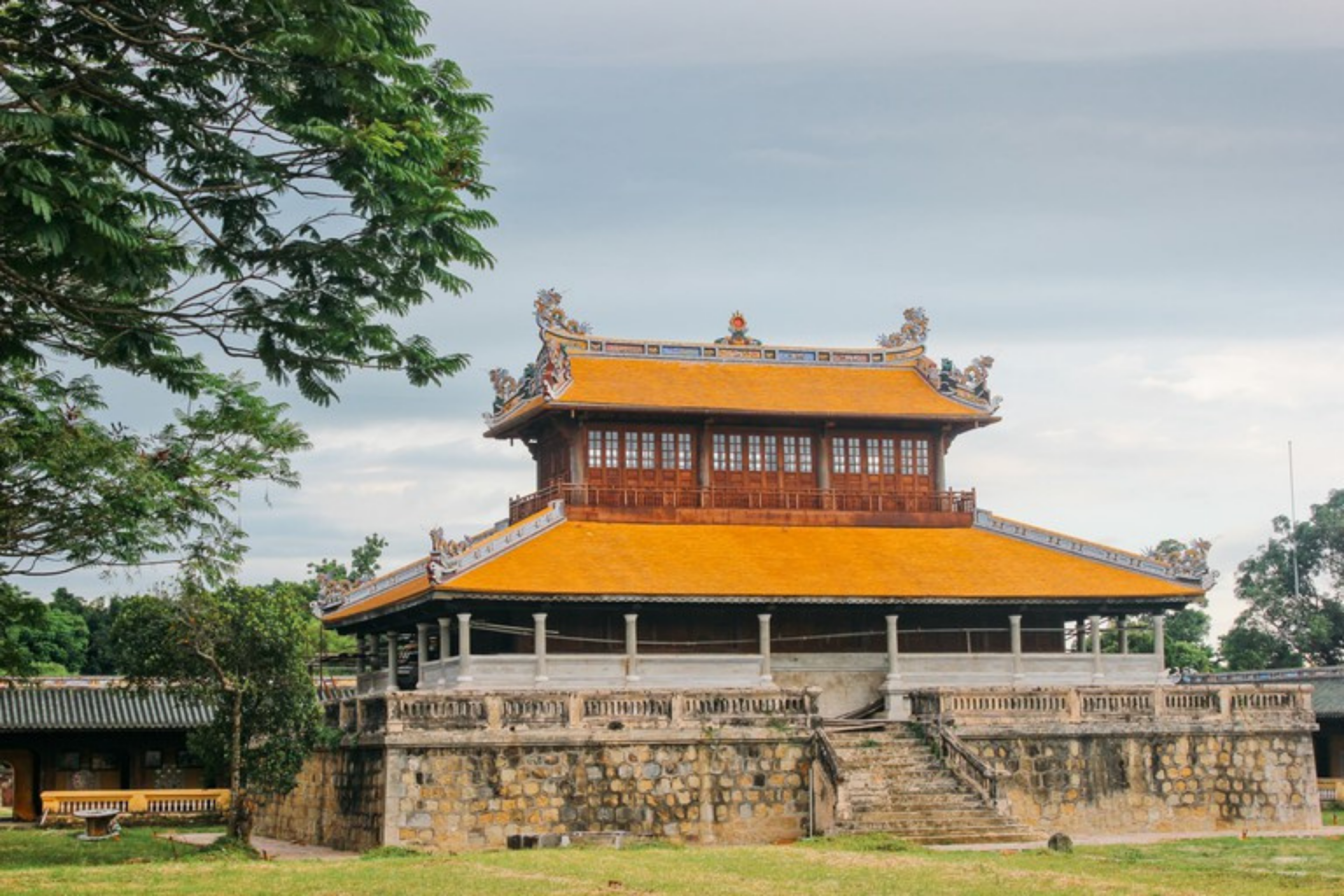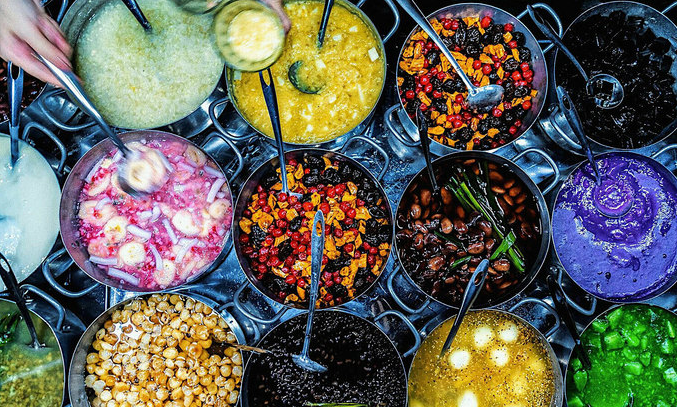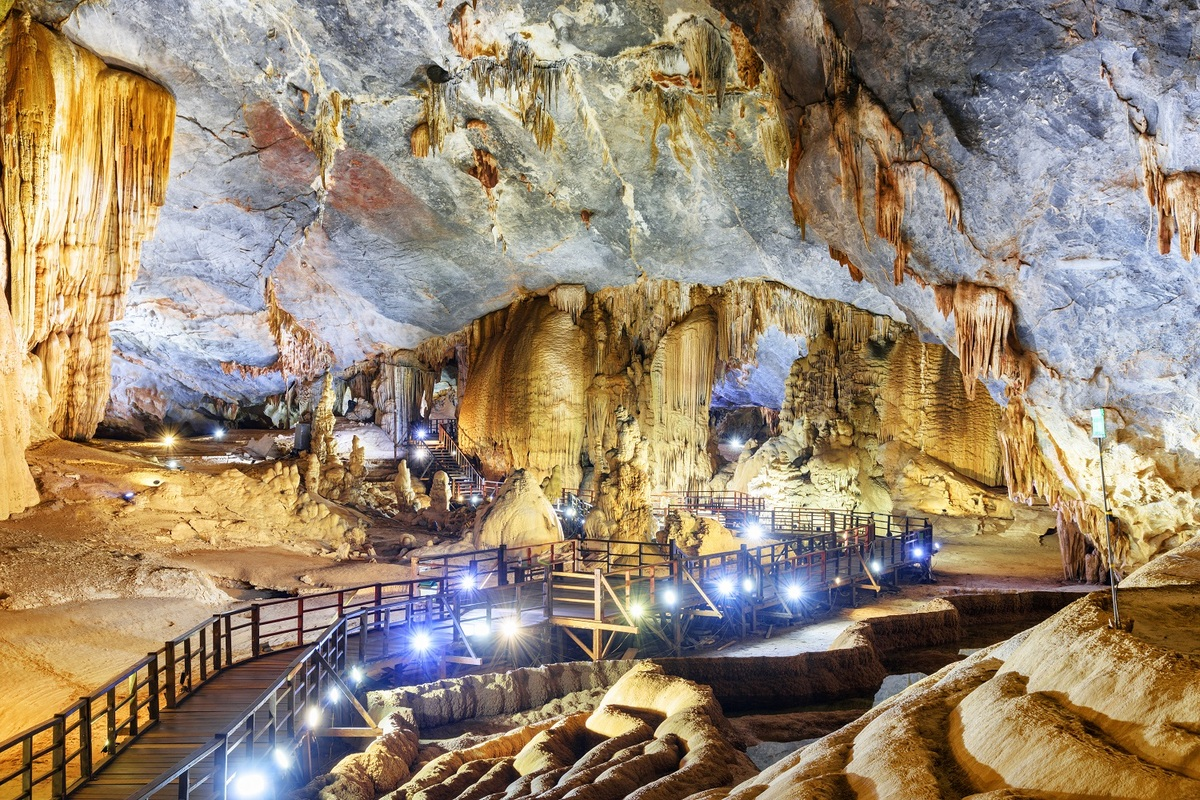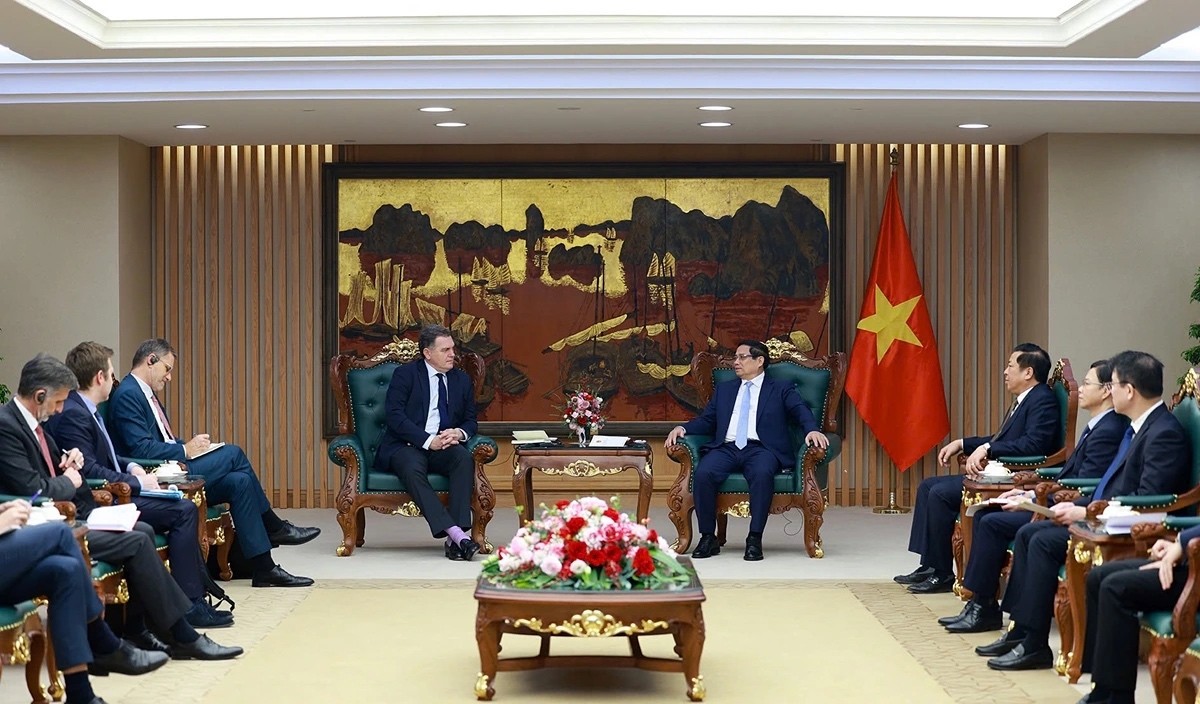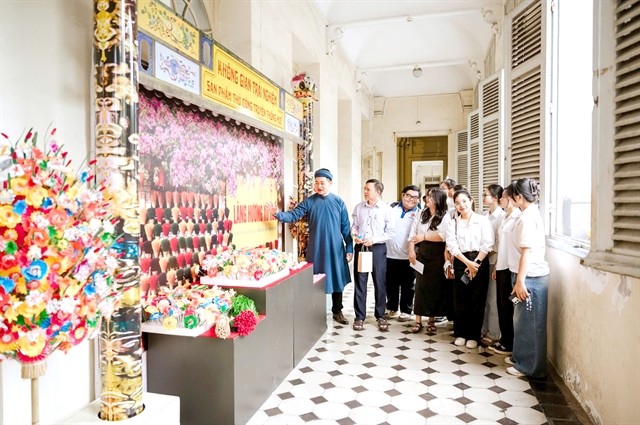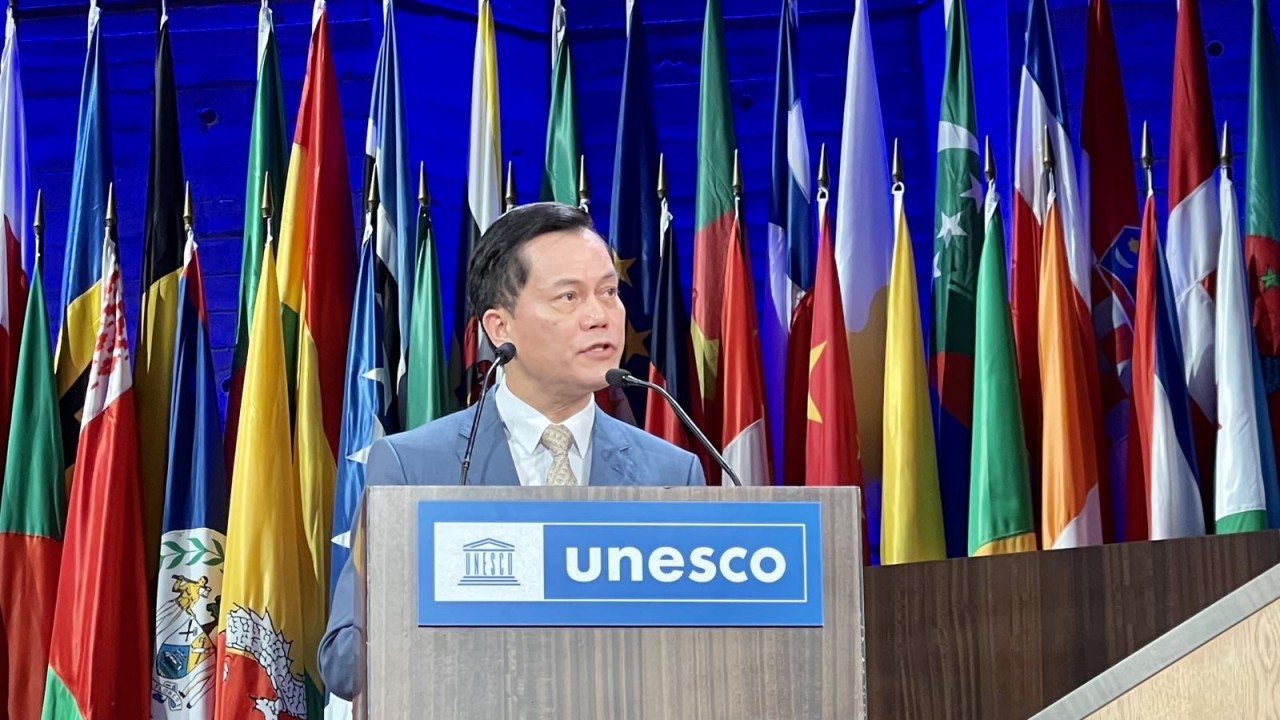Hue to seek UNESCO recognition for nine dynastic urns
| The antique beatuty of Hue Citadel | |
| Hue cuisine seeks UNESCO recognition as intangible cultural heritage | |
| Discovering Hue and Quang Binh with mganificent tourist attractions |
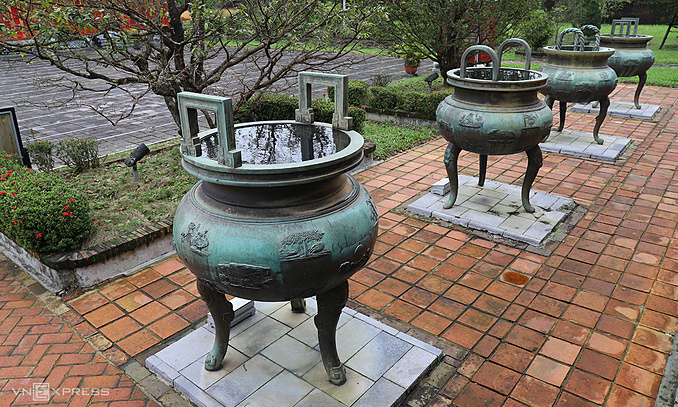 |
| Urns worshiping the Nguyen Dynasty rulers are placed inside The Mieu Temple in Hue. Photo by VnExpress/Vo Thanh. |
Ding is a kind of ancient Chinese cauldrons that stand upon legs with two facing handles.
The nine dings placed inside The Mieu Temple are all cast in bronze. They date back to a three-year 1835-1837 period under the reign of King Minh Mang. Each one, about two meters tall and weighing up to 2,600 kg, commemorate an emperor of the Nguyen Dynasty, which ruled from 1802 to 1945.
Vo Le Nhat, director of the Center for Conservation of Hue Monuments, which manages the Hue Imperial Citadel and other relics from the Nguyen Dynasty, said they were completing documents on the nine dings. These will be sent to the Ministry of Culture, Sports and Tourism for submission to UNESCO.
The central one, the largest of the nine, commemorates Gia Long, the dynasty’s first emperor.
The nine dings were recognized as national treasures in 2012.
Located southwest of the UNESCO-protected Hue Imperial Citadel, The Mieu Temple was built in 1822 for the purpose of worshipping the Nguyen Dynasty rulers.
Hue, the seat of the dynasty, is home to royal tombs, ancient palaces and pagodas that attract millions of foreign visitors every year.
It is the capital of Thua Thien-Hue Province, which has five world heritages: Hue's Complex of Monuments, the town’s nha nhac or royal court music, Nguyen Dynasty woodblocks, Nguyen Dynasty documents, and literature on Hue royal architecture.
To Mieu Temple Complex - Hue attractions
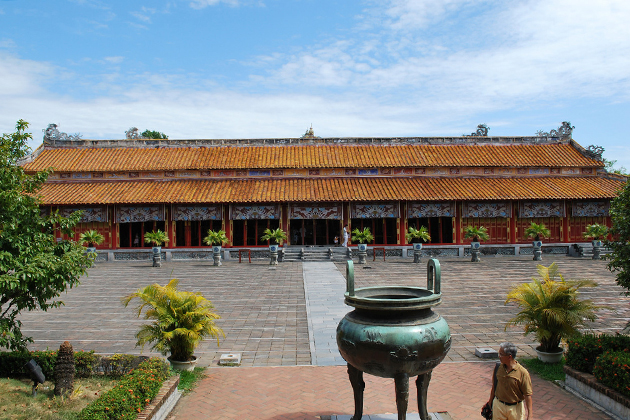 |
| Photo: Vietvisiontravel |
To Mieu Temple Complex lying in the southwest corner of Imperial Enclosure is the place where all Emperors of Nguyen Dynasty were adored. Tourists may find the beauty and the spiritual beliefs of this complex impressive.
Layout of the Complex
Outside of the temple is a large yard covered by Bat Trang tiles (a very famous brand of pottery during that time). On the south side of the yard, stands the striking three-floor Hien Lam Pavilion – the highest construction of the citadel. On the other side of the yard is To Mieu Temple, and between the two structures situated Nine Dynastic Urns (or Nine Censers).
Hien Lam Pavilion
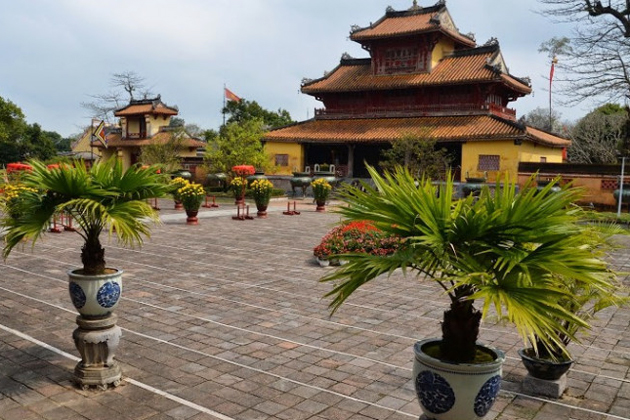 |
| Photo: Vietvisiontravel |
Hien Lam Pavilion, considered as a monument of Nguyen Kings’ achievements and also of mandarins that had huge contributions to the Dynasty, was built in 1821 and finished in1822
The pavilion has three tiers. The first floor with five rooms having the pillar system engraved with exquisite dragons and other patterns is appreciated to have high artistic value. The small wooden staircase here is considered an artwork with highest artistic value of Hien Lam Pavilion. Second floor has 3 rooms. The highest floor has just one room, and on the top of the pavilion, there exists a golden wine gourd, which makes the building elegant.
It is the combination of Hien Lam Pavilion and the surrounding objects that makes the important value of this Pavilion. Under Nguyen dynasty, all other architectures had to be shorter than Hien Lam Pavilion.
Besides To Mieu Temple and The Nine Urns, Hien Lam Pavilion becomes one of the most outstanding features of Hue Citadel Complex and is the must-visit destinations when visiting this World Cultural Heritage. With the distinguish value of architecture, Hien Lam Pavilion and Perfume River had been voted as the symbol of Northern Coastal Central area – Hue in 2012.
To Mieu Temple
To Mieu Temple is located in a 2 hectares rectangle area. The main house with 9 rooms and the second house with 7 rooms are connected together. The roof tiles are made of lapis lazuli.
Inside of the Temple, Gia Long king and his two Empresses are worshiped in the middle; the altars of the rest kings are respectively placed on the left and right of the main altar. According to Nguyen family’s regulation, only the kings that died when they were reining the country could be adored in To Mieu Temple. Therefore, before 1958, only 7 altars were put here. Not until 10/1958 were the altars of three more patriotic kings who were Ham Nghi, Thanh Thai and Duy Tan moved into The Temple.
Nine dynastic Urns
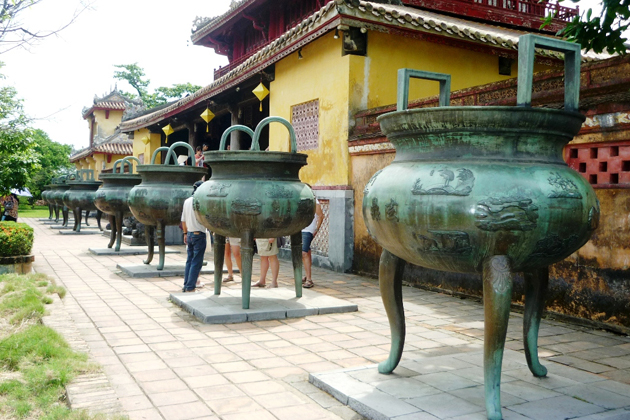 |
| Photo: Vietvisiontravel |
Between these two temples are Nine Dynastic Urns (dinh) cast between 1835 and 1836, each dedicated to one Nguyen sovereign.
About 2m in height and weighing 1900kg to 2600kg each, the urns symbolise the power and stability of the Nguyen throne. Each copper censer has its own name which is named after the name of every king of Nguyen Dynasty. They have different weights, different surrounding engraved patterns. They are respectively Cao Censer, Nhan Censer, Chuong Censer, Anh Censer, Nghi Censer, Thuan Censer, Tuyen Censer, Du Censer and Huyen Censer. The central urn, also the largest and most ornate, is dedicated to dynasty founder Gia Long.
The three objects Hien Lam Pavilion, The Temple and the Nine Urns are always linked together when people talked about Hue Citadel, proving that the connection in terms of structures as well as the functions of these three architectures is inseparable.
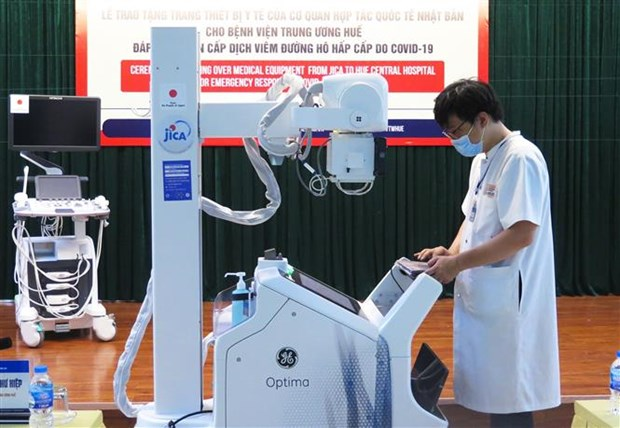 | Japan presents medical equipment to Hue Central Hospital The Japan International Cooperation Agency (JICA) on April 9 presented a number of medical equipment to the Hue Central Hospital to support the facility to ... |
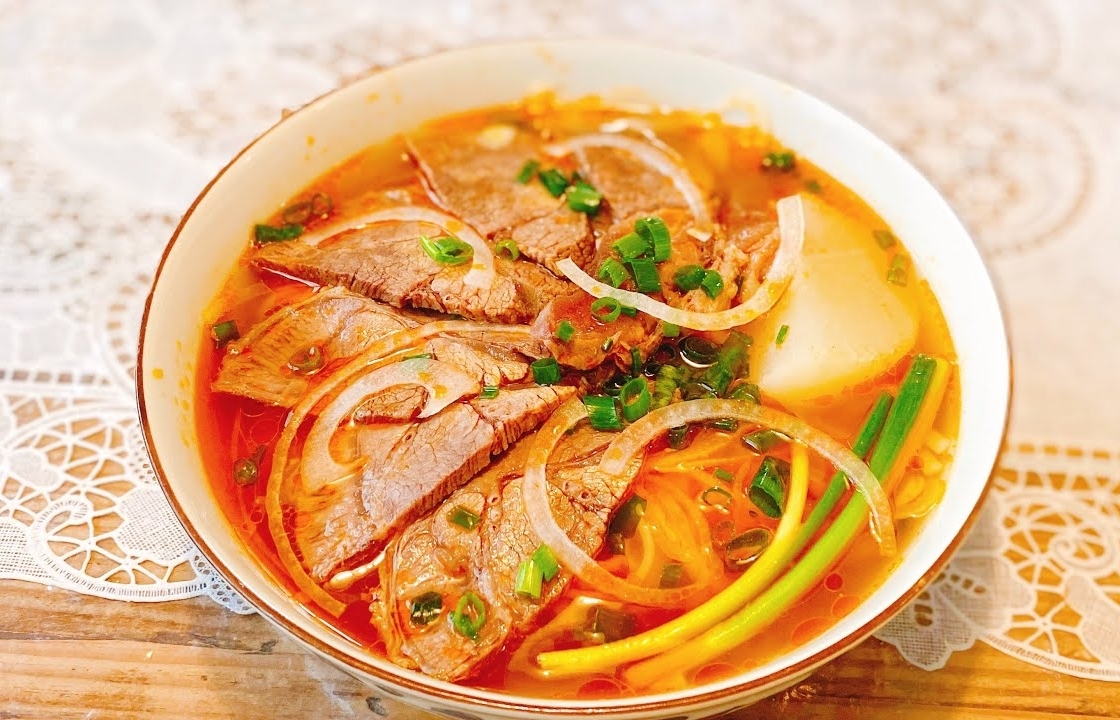 | Homemade recipe for 'Bun Bo Hue' (Hue style beef noodle soup) with popular ingredients Recipe for bun bo Hue (Hue style beef noodle soup) will be no longer so complex and time-consuming with tomato sauce and coconut milk! |
 | Exploring enchanting Hue with unique destinations There are many interesting things to explore in Hue, the former capital of Vietnam from Truong Tien Bridge, Dong Ba Market, Phu Van Lau, Huong ... |
Recommended
 Handbook
Handbook
Vietnam Moves Up 8 Places In World Happiness Index
 Handbook
Handbook
Travelling Vietnam Through French Artist's Children Book
 Multimedia
Multimedia
Vietnamese Turmeric Fish among Best Asian Dishes: TasteAtlas
 Handbook
Handbook
From Lost to Found: German Tourist Thanks Vietnamese Police for Returning His Bag
Popular article
 Handbook
Handbook
Prediction and Resolution for the Disasters of Humanity
 Handbook
Handbook
16 French Films To Be Shown For Free During Tet Holiday In Vietnam
 Handbook
Handbook
Unique Cultural and Religious Activities to Welcome Year of the Snake
 Handbook
Handbook

